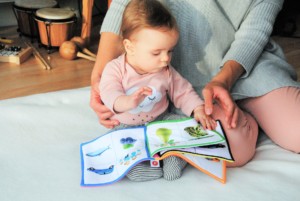Speech-language pathologist (SPL) are often referred to as speech therapists. They are professionally trained to work with children on a variety of disorders and delays. From complex disorders such as Down syndrome and autism, to mild articulation delays and motor speech disorders.
How can a speech-language pathologist help your child?
 Speech intelligibility and articulation skills
Speech intelligibility and articulation skills
ASHA describes intelligibility “as a perceptual judgment that is based on how much of the child’s spontaneous speech the listener understands.” Basically, how well you and others can understand what your child is saying. Compromised articulation skills can decrease their intelligibility. SPL’s work with children to produce specific sounds or sound patterns to increase their intelligibility.
Expressive language skills
Does your child have trouble sharing their feelings, ideas or thoughts? This is an expressive language. SPL’s will help your child put together sentences and form phrases, so they can communicate easier.
Receptive language
The ability to understand and comprehend what a child hears is receptive language. An SLP teaches children how to follow direction participate in conversations, answer questions and how to use new vocabulary.
Speech fluency
ASHA defines speech fluency as, “an interruption in the flow of speaking characterized by repetitions (sounds, syllables, words, phrases), sound prolongations, blocks, interjections, and revisions, which may affect the rate and rhythm of speech.” The most common fluency disorder is stuttering. Teaching your child strategies to control this behavior is how SPL’s can help.
Empower you and your child
An SPL equips parents and caregivers with the knowledge and tools to help your child. Creating a team that can change your child’s life, by giving them the ability to learn, communicate, and socialize.
Setting up your child for success, is the most powerful thing a parent can do. ASHA offers parents essential information on children’s communication and development from birth to and 5.


